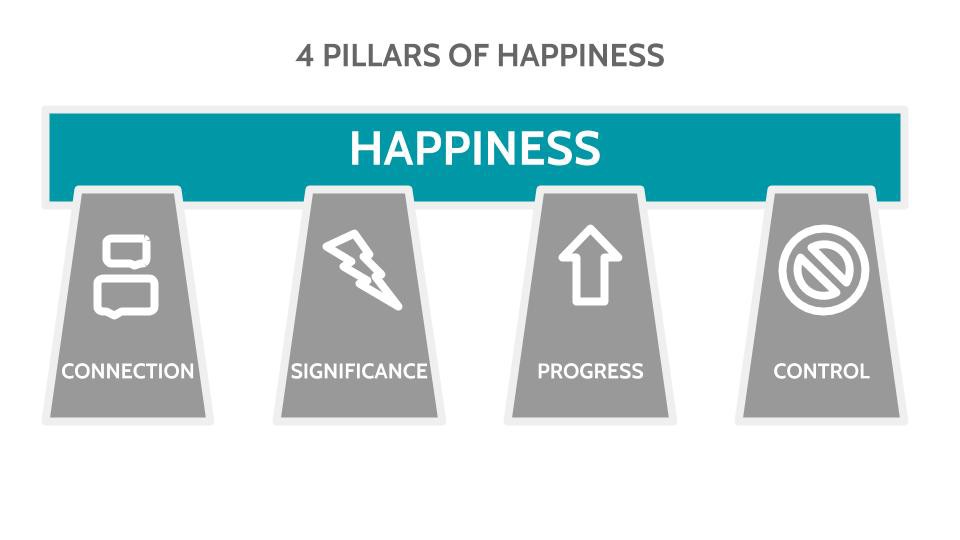Northern Ireland is consistently identified by the Office of National Statistics as being one of the ‘happiest’ places in the UK.
However, as FactCheckNI put it, “While we subjectively self-report a general state of happiness, other objective criteria highlight issues that affect our mental health and well-being.”
In other words, there is a huge difference between ‘feeling happy’ as reflected in answers to the ONS survey, and having quantifiable ‘reasons to be happy’.

So what drives the perception of happiness? How can we harness this in a business context?
These are questions we’ll explore via Tony Hsieh’s ‘Delivering Happiness’, as the first of a series of business book reviews.
So who is Tony Hsieh, and what is his book about?
Hsieh — the driving force behind the pioneering online shoe retailer Zappos, later acquired by Amazon — spends Delivering Happiness delving into his philosophy, adventures at the poker table, childhood, and exceedingly successful early career (tech startups, venture capital) among many other things. However, his overriding interest is team culture, with Zappos (surprise) forming an in-depth case study.
I don’t have time to read it – what is the most important bit?
Hsieh’s guiding insight, tucked away in the final chapter, is that happiness is driven by four things – perceived control, perceived progress, perceived connection, and perceived significance. While this may not be entirely unique (See Dan Pink’s excellent TED talk on motivation that makes some of the same points), the fact that Zappos’s entire business model became predicated on it, is quite remarkable. Keeping your customers happy is one thing, aiming to systematically keep your whole company happy is something else entirely.
So what are the four pillars of happiness?
Perceived control is the ‘freedom to’ direct a personal career path or choose flexible working arrangements, as well as the ‘freedom from’ micro-managers and long hours. Not only must this autonomy be practically achievable, we must also perceive that this control is available to us.
Perceived progress relies on us feeling that we are moving forward. The barometer by which we measure this varies wildly from person to person. Whether we measure progress by the number on our paycheck, the number of children we have, or the stamps on our passport, we perceive progress in different ways.
Zappos built a pipeline of talent, not only ensuring that they would always have a suitable range of leadership candidates at every level, but also giving that talent a clear and achievable route to progress through.
Perceived connectedness is conceptually simple, if not always straightforward to achieve. The higher the number of quality relationships we have in a team, the more engaged in that team we will be and the happier we will be within it. Easier said than done.
Perceived significance derives from having a purpose, vision or meaning behind what we do, beyond merely ‘putting bread on the table’ and ‘keeping the wolf from the door’. Having a good answer to ‘Does it really matter?’ and ‘what is it all for?’ is crucial. This relies on a combination of two factors – the extent to which we recognise the value of our organisation’s vision, and the extent to which we feel our contribution aligns to it.
The ‘four pillars of happiness’ can be a simple tool to analyse why individuals or teams are struggling. Similarly, they can become a framework for reviewing your own job (or life) satisfaction, or that of someone you are managing / coaching.

I get the happiness thing. Are there any other pearls of wisdom in there I could adopt?
Plenty; here are a few:
- Offering new hires $2,000 to leave: this is designed to get rid of badly motivated people early on, rather than incurring the various costs associated with low productivity, disloyalty and trying to fire someone for poor performance.
- Ask your people to identify a randomly chosen colleague when logging into the company network in addition to providing their password. This multiple choice test (with no penalties for failure) allowed team members to gradually learn who others were as the company grew larger.
- ‘Never outsource your core competency’ is one mantra that seems to have found its way into common parlance. Whether this maxim is originally attributable to Tony Hsieh is unclear, but what is clear is that Zappos learned this lesson the hard way, after outsourcing to third party while building a customer service brand.
- Viewing contact centers as an opportunity for building your brand and growing customer loyalty rather than a cost to be automated out. Charles Tyrwhitt are great at this. At the other end of the spectrum, it makes the point that ‘It’s OK to fire insatiable customers who abuse your employees’ in said contact centres.
- Using a Minimal Viable Product in the real world doesn’t have to be complex. For the Lean Start-up fans out there, Hsieh outlines a classic example of a Minimal Viable Product being used effectively. In the early days of Zappos, a website was set up which allowed them to test their assumption that customers would buy shoes online, without building the entire infrastructure of a company. The online channel allowed customers to view and order shoes, which would then be bought in a retail outlet and mailed to them. Expensive and unsustainable, but an incredibly powerful way of gathering customer insight and ‘validated learning’.
Should I invest time reading this?
Yes, some of the ‘philosophy of happiness’ content may not be to everyone’s taste.
Yes, some of the messages about finding purpose may seem a little stale in the light of its overuse in business literature written since.
Nonetheless, Delivering Happiness is well worth a look, and serves a useful gateway into thinking about both culture and motivation. Finally, aside from the fact that it’s compelling and accessible, you should read this because it’s amusing, at fairly regular intervals.
Happy reading!

Delivering Happiness: A Path to Profits, Passion, and Purpose (2010) is published by Grand Central Publishing.
